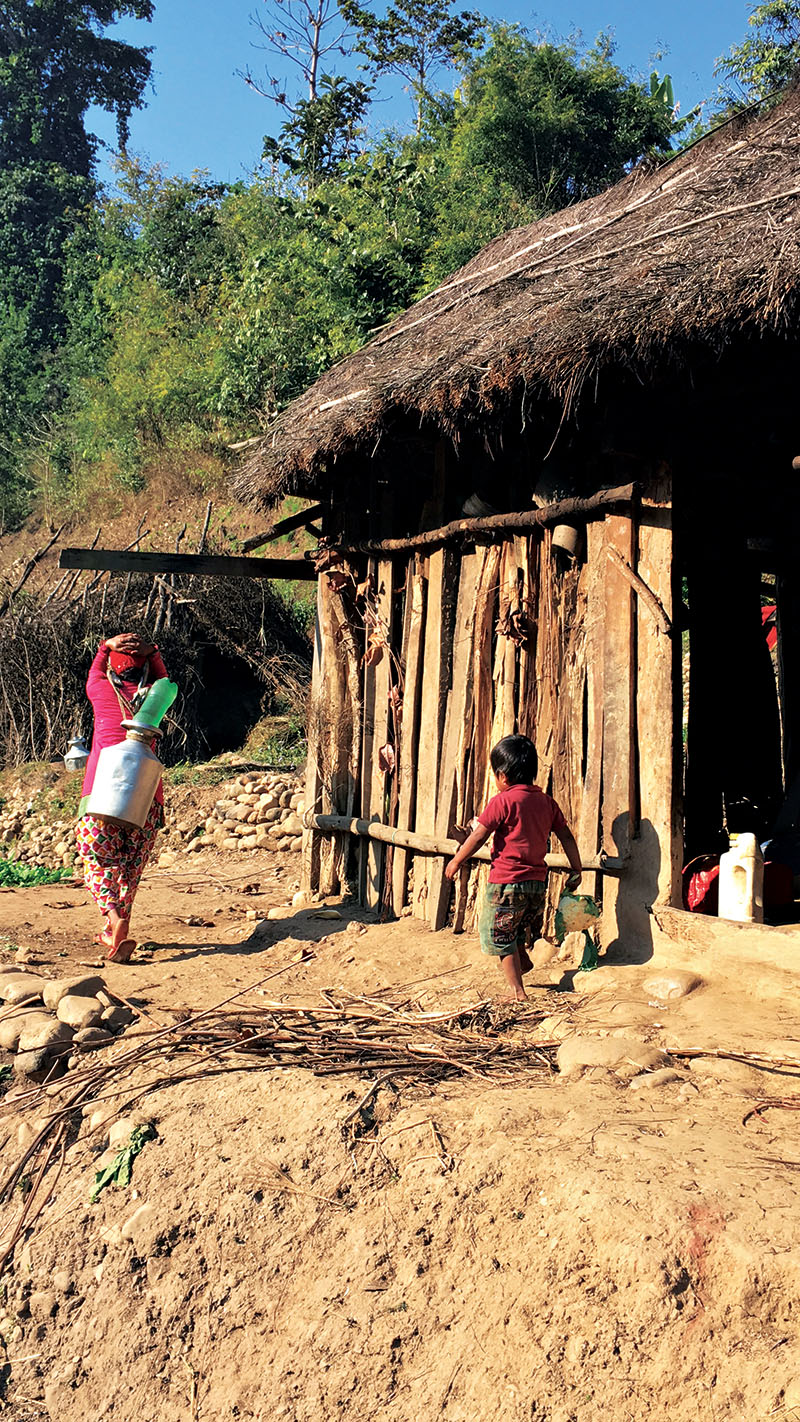For whom hope is all that’s left
Makawanpur, February 15
Whenever Urmila Blon (Tamang) can take a few minutes break from her farm work, she walks to the edge of the terraced field and enviously looks at the houses being rebuilt in the lower tiers at Hadikhola village of Makawanpur district.
Blon is one of the thousands of listed eligible beneficiaries of the government-announced housing grant for quake victims in the district. Unfortunately, she is also among the hundreds who have not been able to get the government support as she lacks the necessary documents.
“We have been approaching the village development committee (VDC) office for the aid, but the officials there told us we need to present our land ownership certificate first,” said 35-year-old Blon.
A total of 300 affected households in the village, whose houses suffered irreparable damage during the devastating quake of 2015, are at the risk of being left out of the government’s housing grant because they do not have any land to their name and had been living in public property since many years. The plight of landless victims of Hadikhola area is compounded by the fact that most belong to marginalised ethnic communities like Chepang, Tamang and Sunar, among others.
The National Reconstruction Authority (NRA) started grant distribution process to the quake survivors living in makeshift shelters from March 13 of last year, nearly 11 months after the quake struck. While 82 per cent of the beneficiary households have already received the first tranche of Rs 50,000 to start rebuilding houses, the issue of landless victims is yet to be resolved.
“Since the grant distribution process started, the District Development Committee (DDC) has forwarded the list of beneficiary households to the concerned VDCs and municipalities for the purpose of signing grant agreement. However, due to lack of government’s policy to address the issue of landless victims, they are still deprived of the housing reconstruction aid despite being listed as beneficiary households,” explained Kisan Neupane, planning monitoring and administrative officer at the Makawanpur DDC.
NRA officials are also clueless about when the grant amount, a total of Rs 300,000, will be released to the landless victims. There is no legal provision to sign the grant agreement without the land ownership certificate, and the grant is released only after signing the agreement with local bodies in purview of NRA.
It is estimated that nearly a quarter of the population of the country are landless. Still, the issue of landless beneficiaries was overlooked while formulating the ‘Guidelines on Grant Distribution to Private Houses’ — the legal document to regulate the government aid for individual house reconstruction.
“Discussions related to the matter have been held time and again during the prime minister-led meetings of the NRA steering committee, but there has been no headway yet because if the government takes any decision regarding landless people without categorising the settlements on public land based on various indicators, it will also give legal status to the communities that are living rampantly by encroaching on government land,” a high-level NRA source told The Himalayan Times.
As per data collected by NRA, Makawanpur district has the highest number of landless quake victims — around 4,470 households out of the total 30,238 beneficiary households identified by the beneficiary survey of NRA. It is followed by Sindhuli, where 3,038 beneficiary households are landless out of the total of 34,269 eligible beneficiaries.
“As the government has been distributing housing reconstruction grant with the support of development partners, the government will not be able to justify distributing money to the families that are living on unregistered land and questions related to irregularities in housing grant distribution can be raised,” explained the NRA official, requesting anonymity due to the sensitivity of the matter.
So far, NRA has finished collecting data of landless victims from five districts — Makawanpur, Sindhuli, Dhading, Rasuwa and Sindhupalchowk, out of 14 severely affected districts, according to Yam Lal Bhoosal, spokesperson for NRA. “Data collection from other districts is also being carried out. We have estimated that there are around 21,000 landless households out of the total 626,696 beneficiary households listed as eligible to receive the government aid through the NRA survey.”
Initially, beneficiary households that had built homes on the land of guthi (collective ownership) and those having surveyed land but lacking land ownership certificates were also facing hassles in receiving the government aid. Their issue was resolved just a few months back and now they are receiving grant after they presented any kind of evidence of ownership, even if it has been issued by the local bodies — VDCs and municipalities. They are, nonetheless, asked to initiate the process of obtaining land ownership certificate from the District Survey Office and Land Revenue Office.
And while the government takes its time in making a decision on how to settle the issue of landless victims, the living condition of those like Blon is slipping from bad to worse.
“Those who have land and are more economically capable have been receiving grant to rebuild their lives, but there has been no respite for poor quake victims like us,” said Binda Chepang, another landless quake victim of Hadikhola VDC.
Forced to live hand-to-mouth by eking out a living by taking up odd jobs, the landless victims, however, continue to cling on to hope that things will turn around for them.
“We lost what little we had in the earthquake. Hope is all we have left now,” said Shanta Bahadur Chepang, 58, crouched outside the makeshift shelter in which he has already spent three winters.






